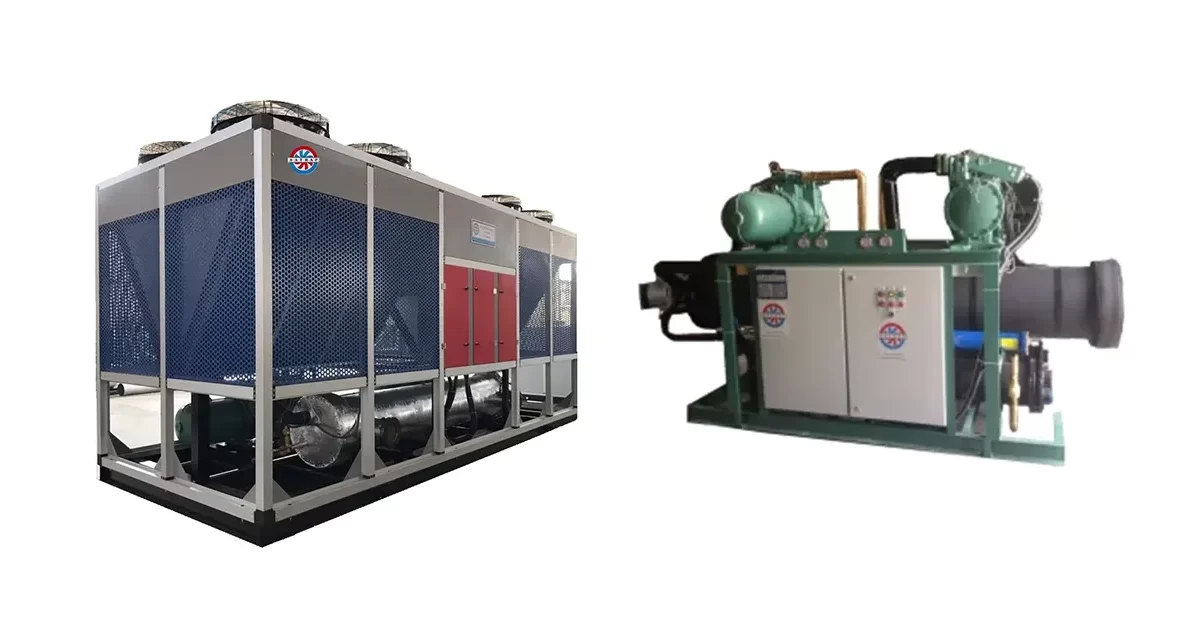Air-cooled vs. Water-cooled Chillers: Key Differences
A chiller is a machine used to produce chilled or cold water. It is used in various applications, including air conditioning, industrial processes, and food and beverage processing.
A chiller consists of several components, including:
- Compressor: The compressor compresses the refrigerant and increases its temperature.
- Condenser: The condenser rejects the heat from the compressed refrigerant to the surrounding environment.
- Evaporator: The evaporator absorbs heat from the surrounding environment and converts the refrigerant into a liquid.
- Expansion valve: The expansion valve throttles the refrigerant, causing its pressure and temperature to decrease.
Types of Chillers
Chillers are available in various types, one of the most important classifications being based on the method used to cool the condenser.
Air-Cooled Chillers
In air-cooled chillers, the condenser is cooled by air. This is achieved by using fans that pass air over the condenser, transferring the heat from the refrigerant to the ambient air.
Water-Cooled Chillers
In water-cooled chillers, the condenser is cooled by water. This is done by using coils in the condenser through which cold water flows, absorbing the heat from the refrigerant.
Differences Between Air-Cooled and Water-Cooled Chillers
Air-cooled and water-cooled chillers differ in several aspects, including:
- Condenser cooling method: Air-cooled chillers use air to cool the condenser, while water-cooled chillers use water.
- Cost: Air-cooled chillers are generally less expensive than water-cooled chillers.
- Energy consumption: Air-cooled chillers typically consume more energy than water-cooled chillers.
- Capacity: Water-cooled chillers can be used in higher capacity applications than air-cooled chillers.
- Applications: Air-cooled chillers are commonly used in smaller buildings and applications where water is scarce or expensive. Water-cooled chillers are often used in larger buildings, industrial processes, and areas with abundant water availability.
Factors to Consider When Choosing a Chiller
When selecting a chiller, several factors should be considered, including:
- Required capacity: The chiller’s capacity should match the building’s cooling requirements.
- Ambient conditions: If the building is located in a hot and humid climate, a water-cooled chiller may be a better option.
- Budget: Air-cooled chillers are generally more affordable than water-cooled chillers.
Conclusion
Both air-cooled and water-cooled chillers are effective cooling systems. However, they differ in several aspects, such as condenser cooling method, cost, energy consumption, capacity, and applications. The choice of the appropriate chiller type depends on various factors, including the required capacity, ambient conditions, and budget.

